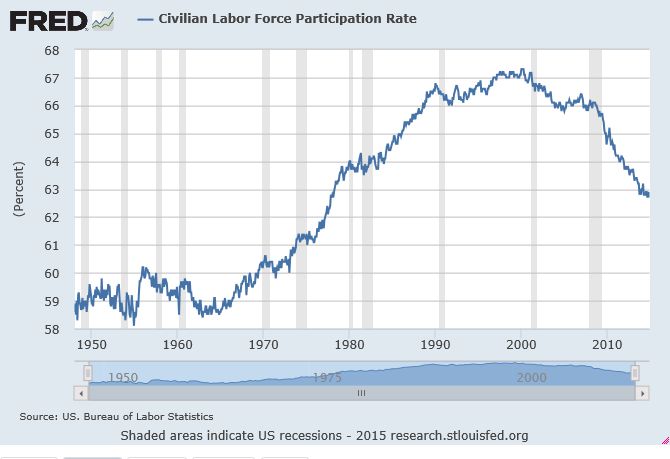The “Big Lie” About the U.S. Jobs Picture
Some 30 million people are either out of work or severely underemployed
The financial media heve been featuring stories with an upbeat outlook for the U.S. economy.
For example: The economy is on track for “the fastest growth in a decade” (Associated Press), and “Experts expect jobs aplenty in ’15” (USA Today).
This upbeat tone is related to December’s U.S. jobless rate of 5.6%, its lowest since June 2008.
But Jim Clifton, Chairman and CEO of Gallup, offers a different perspective on the jobs data. His February 3 article on Gallup’s website was headlined, “The Big Lie: 5.6% Unemployment.”
Right now, we’re hearing much celebrating from the media, the White House and Wall Street about how unemployment is “down” to 5.6%. The cheerleading for this number is deafening.
None of them will tell you this … If you are so hopelessly out of work that you’ve stopped looking over the past four weeks — the Department of Labor doesn’t count you as unemployed. … Right now, as many as 30 million Americans are either out of work or severely underemployed. …
If you perform a minimum of one hour of work in a week and are paid at least $20 … you’re not officially counted as unemployed … .
If you … are working 10 hours part time because it is all you can find … the government doesn’t count you in the 5.6%.
There’s no other way to say this. The official unemployment rate … amounts to a Big Lie.
A Federal Reserve chart shows that the civilian labor force has been shrinking for 15 years.

The February Elliott Wave Financial Forecast comments:
Why is [the U.S. Labor Force Participation Rate] falling when job growth is rising? The answer, we think, is the emerging force of deflation. Notice that the peak participation rate of 67.3% came from January to March 2000, as the major stock indexes topped, after which inflation first began to falter. When stocks rallied to their 2007 top, there was a mild bounce in the rate, but the latest stock market rally failed to generate any sustained rise in the rate of work force participation. Workers appear so discouraged that the pool of available employees is back to where it was in 1978. The opening chapter of Conquer the Crash …states, “The persistent deceleration in the U.S. economy is vitally important, because it portends a major reversal from economic expansion to economic contraction.”
What will the jobless picture look like at the bottom of an economic contraction?
The third edition of Conquer the Crash published in July 2014 and forecast:
The true unemployment rate in the U.S. and in most countries around the world will rise and eventually exceed 25 percent … .
Get Your Special Report: What You Need to Know NOW About Protecting Yourself from DeflationIn this free Special Report, you will learn about this unexpected but imminent risk to your portfolio AND you’ll get 29 specific forecasts for stocks, real estate, gold, cultural trends — and more (excerpted from Prechter’s New York Times bestseller Conquer the Crash — You Can Survive and Prosper in a Deflationary Depression). |
